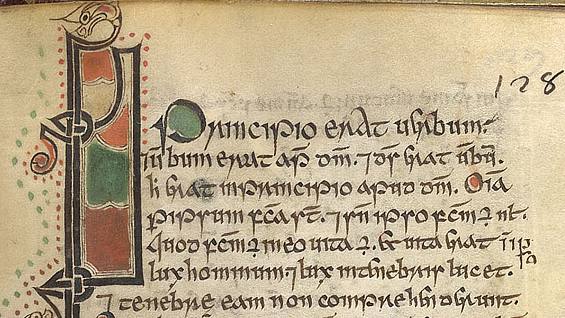Script Type : minuscule
Date : This example is from the early 12th century, representing a tradition which survived in Ireland until modern times.
Location : Ireland
Function : book hand

























Distinctive letters : This very elegant version of insular minuscule initially looks very difficult to read because of unfamiliar letter forms, ligatures and a great deal of abbreviation. However, the letter forms, while tricky to our eyes, are consistent. The letters r, s and, surprisingly, f all appear very similar and they all project below the line; s looks like a conventional r, while r is broader and more open, and f looks rather like an r with a cross stroke. Once you sort those out, you're winning. The letter g is the open, lightning bolt form. The ascender of d is bent nearly flat. All letters are very angular, with strongly wedged tops.
There are two forms of a, an open topped form occasionally appearing, the more common form with a single chamber, and two variants of q.
The letters u and v are identical, as are i and j. There are no examples of k, w, y or z.
In addition, there are numerous ligatures. In particular e becomes tall in certain combinations, such as
 ei
ei  em
em  en
en  er
er  es
es  et.
et.
The letter i is extended below the line in ligature, as in
 ti.
ti.
There are many abbreviations, some of them usually only encountered in insular minuscule script. To examine these in more detail, work through the paleography exercises for this example.
For a quick preliminary glance, pass the cursor slowly over the sample on this page.
Paleography
exercises for this example using Flash ![]()
Requires at least the Flash 5 plugin
If you are looking at this page without frames, there is more information about medieval writing to be found by going to the home page (framed) or the site map (no frames).